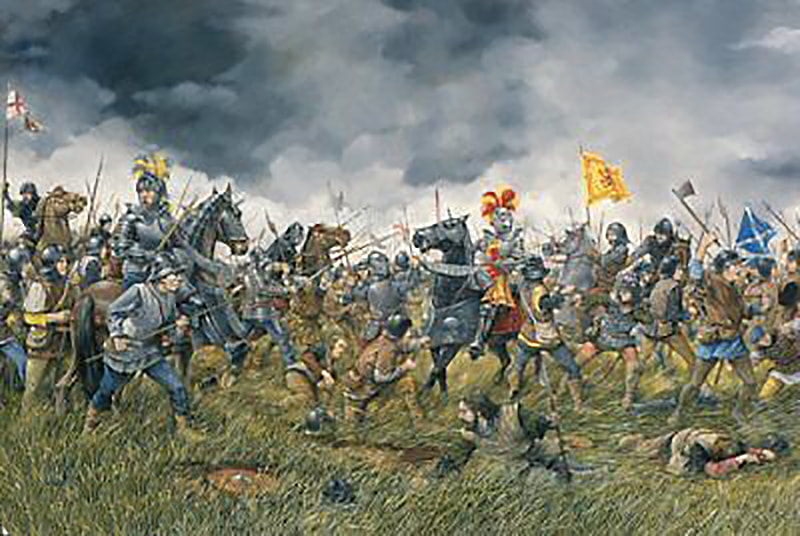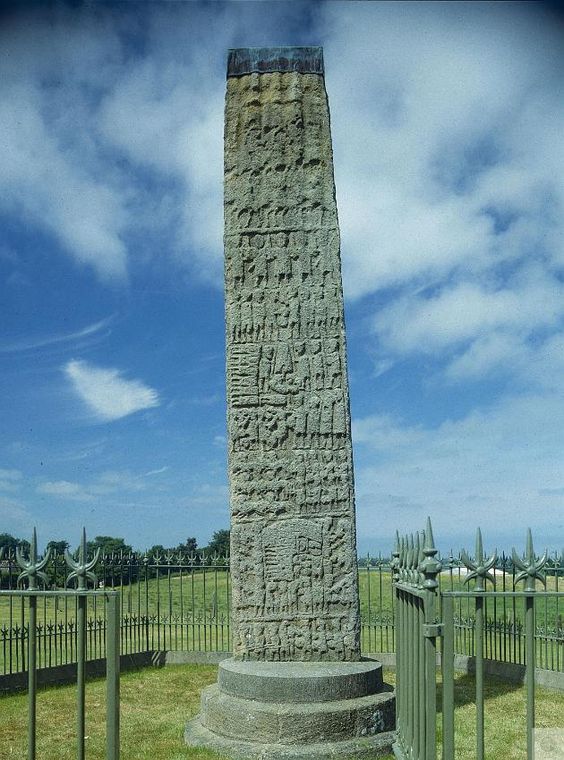MOTTO
The motto was originally a war cry or slogan.
Motto: Deus Juvat
Motto Translation: God assists.
ORIGINS OF THE DUFF FAMILY
The Picts were the ancient Scottish tribe where the ancestors of the Duff family lived. The name Duff comes from the Gaelic Dubh or the older Gaelic word Dub.
The Clan descent from Duff (Dubh, the Black) (d. 967), King of Celtic Alban.
The Clan descent from Duff (Dubh, the Black) (d. 967), King of Celtic Alban.
KING DUFF
Duff (a.k.a. Duffus; Dub mac Maíl Choluim; or Dubh) lived from 930 to 966 and was King of Alba from 962 to 966. The wider picture in Scotland at the time is set out in our Historical Timeline.
Duff was the son of King Malcolm I, and succeeded to the throne on the death (or possibly the abdication) of King Indulf, in 962.
The abiding problem faced by Duff during his reign was the challenge of Culen, King Indulf's son. Culen was not prepared to accept the succession arrived at by the law of tanistry and felt that as Indulf's son, the crown should have come directly to him.
Duff was the son of King Malcolm I, and succeeded to the throne on the death (or possibly the abdication) of King Indulf, in 962.
The abiding problem faced by Duff during his reign was the challenge of Culen, King Indulf's son. Culen was not prepared to accept the succession arrived at by the law of tanistry and felt that as Indulf's son, the crown should have come directly to him.
BATTLE OF CRUP
In 965 the Chronicle John of Fordun records that during Dub's reign bishop Fothach, most likely bishop of St Andrews or of Dunkeld, died. The remaining report is of a battle between Dub and Cuilén, son of king Ildulb. Dub won the battle, fought "upon the ridge of Crup", in which Duchad, abbot of Dunkeld, sometimes supposed to be an ancestor of Crínán of Dunkeld, and Dubdon, the mormaer of Atholl, died.
Following the battle, Duff fell seriously ill and the affairs of state fell into disrepair and rebellions started in a number of areas.
But he recovered, and sought to regain his authority with campaigns in Moray and Ross, culminating with a victorious battle at Forres in 966. Leaders of the rebellions were brought to Forres for execution. Those executed included kinsmen of the governor of Forres Castle. In revenge, the governor arranged for Duff's guards to be drugged and for Duff to be kidnapped and then murdered. The murderers diverted a stream from its course under a bridge at Kinloss and buried his body under the stream bed and under the bridge, before allowing the stream to resume its normal course. It is said that the sun did not shine till it was found and buried. An eclipse on 10 July 967 may have originated or confirmed this story. Duff was reburied in the graveyard at Saint Oran's Chapel on the Isle of Iona. Duff was succeeded by Culen, who most Scots at the time believed to have been behind Duff's death: and who may indeed have been involved.
Following the battle, Duff fell seriously ill and the affairs of state fell into disrepair and rebellions started in a number of areas.
But he recovered, and sought to regain his authority with campaigns in Moray and Ross, culminating with a victorious battle at Forres in 966. Leaders of the rebellions were brought to Forres for execution. Those executed included kinsmen of the governor of Forres Castle. In revenge, the governor arranged for Duff's guards to be drugged and for Duff to be kidnapped and then murdered. The murderers diverted a stream from its course under a bridge at Kinloss and buried his body under the stream bed and under the bridge, before allowing the stream to resume its normal course. It is said that the sun did not shine till it was found and buried. An eclipse on 10 July 967 may have originated or confirmed this story. Duff was reburied in the graveyard at Saint Oran's Chapel on the Isle of Iona. Duff was succeeded by Culen, who most Scots at the time believed to have been behind Duff's death: and who may indeed have been involved.
SUENO'S STONE
The massive (23 feet, 7 metres, high) 9th century Sueno's Stone at Forres in Moray. It is the largest known Pictish sculptured stone. On one side is a large cross. On the other side are scenes of fighting and killing, dead and decapitated bodies...almost a hundred figures in all.
It has been suggested that the magnificent 20ft tall Sueno's Stone which stands on the north east side of Forres may depict Duff's victory in 966, and his subsequent murder and burial under the nearby bridge.
It has been suggested that the magnificent 20ft tall Sueno's Stone which stands on the north east side of Forres may depict Duff's victory in 966, and his subsequent murder and burial under the nearby bridge.






No comments:
Post a Comment